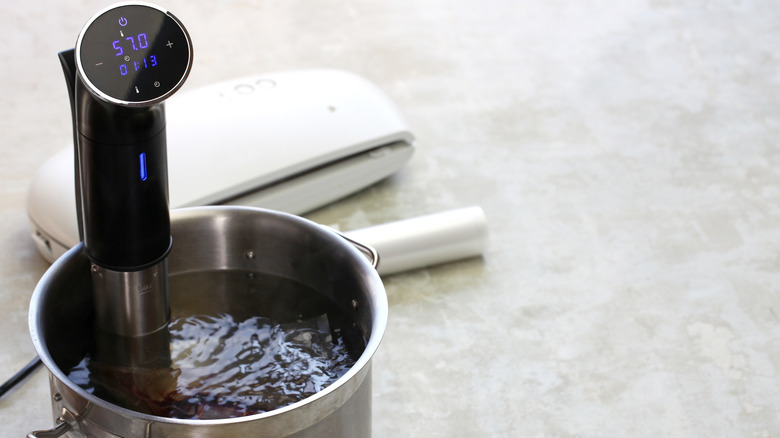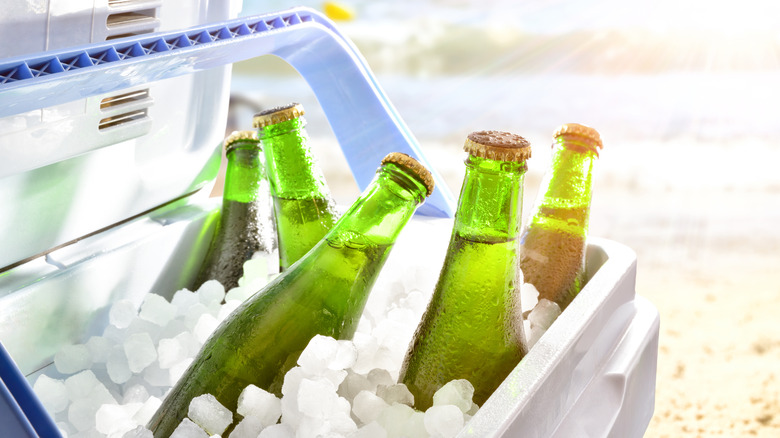The Cooler Cooking Method For More Affordable Sous Vide
We may receive a commission on purchases made from links.
Sous vide calls to mind strapping young chefs leaning patiently over farm-to-table salmon cooking to succulent perfection in high tech contraptions that may be worth more than your weekly salary. The trendy cooking method, which means "under vacuum" in French, goes along these lines: Ffood items are vacuum-sealed (hence the name) in a plastic bag and submerged in a temperature-controlled water bath. The food, which could be steak, fish, or even garlic, is then slowly cooked at a temperature far lower than in traditional cooking methods, resulting in a product that is tender and evenly cooked throughout.
Food nerds and gearheads might be tempted to shell out for one of the many sous vide machines on the market, the pricier of which come with in-app control systems that you can toggle with from any location (via Wirecutter). You simply take a sous vide wand, attach it to the pot of your choice, and allow your food to cook in its own juices — no added oil or butter required (via Anova). But one of these machines could cost you between $100 and $500, according to popular products available on Amazon.
Luckily, there's an easy way out: Would you believe you can forget about taking up extra kitchen drawer space and sous vide using something you probably have in your own home?
Your beer cooler can double as a sous vide machine
As it turns out, that beer cooler in your dad's basement is good for more than keeping six packs of Bud Light cold on a fishing trip with the boys. Coolers work by insulating their contents from the pesky hot air outside using a layer of foam tucked between the inner and outer walls of the cooler. When you fill a cooler with ice and drinks, as long as you keep the cooler closed and the hot air out, the interior temperature will remain consistent (via Wired).
But that foam insulation can work the other way around. If you fill a cooler with hot water and keep it closed, the temperature should remain more or less the same for a couple of hours, making it ideal for an ad hoc sous vide project (via Serious Eats). Make sure your water is heated to a couple degrees higher than the suggested final temperature to account for the slight temperature drop in the water caused by your room-temperature meat or produce, and allow the food to cook for anywhere between one and four hours.
Checking the water temperature periodically will allow you to ensure that your temperature remains stable, but remember that every time you open the cooler, you will lose some heat. If your temp is low, just add more hot water (via The Daily Meal), and voilá! You're on your way to a chef-grade meal without the restaurant-grade cost.

